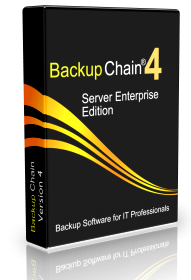18 Hyper-V Requirements and Recommended Hardware
Below is a list of requirements and recommended hardware when you set up a Hyper-V host or system.
Every “modern” PC bought within the last five years will satisfy the above requirement.
Here are some real world Hyper-V requirements
- Use really fast hard drives, ideally SSD.
- RAID striping probably won’t help as much as a really fast SSD or at least hybrid SSD drives
- Storage: the more the better. Buy at least twice as much hard drive space as you think you need today
- RAM: 128 GB and up. Use the fastest RAM available of the type: ECC RAM
- CPU: The more cores the better. You will want to allocate certain cores to certain VMs for best performance
- Hard disk arrays should be strategically separated. Use several fast hard drive arrays rather than one single array
- Having separate arrays makes it easier split the virtual disk load to separate hard drive clusters. Mechanic drives impose a huge penalty when having to move the drive heads. SSDs don’t have this issue but wear down much faster than mechanical drives. Having separate arrays reduces this effect dramatically.
- Multi-processor motherboards may not be worth the money, depending on your situation. You may be better off using separate clustered, lower-cost Hyper-V servers. Remember that Windows Server 2012 R2 and later offer “shared nothing live migration” so you don’t have to have a SAN and a CSV to build a great, small, and effective data center. Windows Server 2016 introduced Storage Spaces that you can use to build a software based storage device at much lower cost.
- We recommend Seagate drives. We’re not affiliated with Seagate. But from our test lab experience, no other manufacturers hardware survived our Hyper-V backup test procedures.
- Use a server case that is very well ventilated and has dust filtration. Unlike an average server, Hyper-V servers burn a lot of energy. Also swapping drives should be simple.
- Format using 4KB NTFS and do not use file system compression or encryption
- Use GPT layouts for data disks so you can grow volumes as necessary
- Use a separate disk array for the system paging file. Hyper-V needs a paging file that is 3x the RAM size. Use a fixed size (min and max the same value)
- Use BackupChain to protect your investment.
Backup Software Overview
The Best Backup Software in 2025 Download BackupChain®BackupChain is the all-in-one server backup software for:
Server Backup
Disk Image Backup
Drive Cloning and Disk Copy
VirtualBox Backup
VMware Backup
Image Backup
FTP Backup
Cloud Backup
File Server Backup
Virtual Machine Backup
BackupChain Server Backup Solution
Hyper-V Backup
Popular
- Best Practices for Server Backups
- NAS Backup: Buffalo, Drobo, Synology
- How to use BackupChain for Cloud and Remote
- DriveMaker: Map FTP, SFTP, S3 Sites to a Drive Letter (Freeware)
Resources
- BackupChain
- VM Backup
- V4 Articles
- Knowledge Base
- FAQ
- BackupChain (German)
- German Help Pages
- BackupChain (Greek)
- BackupChain (Spanish)
- BackupChain (French)
- BackupChain (Dutch)
- BackupChain (Italian)
- Backup.education
- Sitemap
- BackupChain is an all-in-one, reliable backup solution for Windows and Hyper-V that is more affordable than Veeam, Acronis, and Altaro.
Other Backup How-To Guides
- How to Configure a Hyper-V Granular Backup
- How to Fix VolSnap 36 Error User Imposed Limit – Volume Snapshot
- What is Granular Restore and How to Use it for Hyper-V Guest Recovery?
- How to Set up a Free NAS with NTFS for Backups and Hyper-V
- Set Up Private DIY Cloud Server Storage and Access via Mapped Drive
- SMTP Troubleshooting Sending Email Alerts and Logs
- How to Delete All VSS Shadows and Orphaned Shadows
- Path Too Long? Try Delete Long Path File Freeware Tool DeleteLongPath™
- Volume Shadow Copy Error Diagnostic Freeware VssDiag
- Hyper-V Backup: Simple, Powerful, and Open Standard
- How to Mount an Amazon S3 Bucket as a Drive in Windows
- Copy Long Path Names and Deep Folders over 240 Characters
- BackupChain Backup Software Rewards for MSPs and Users
- How to use Granular Restore to Extract Individual Files from Virtual Machine Backups
- Hyper-V Granular Backup vs. Hyper-V Full VHD Backup
- Differential Backup
- Copy VHD / VHDX to Disk or Network With Optional Compression Deduplication
- VMware Cloud backup
- Why You Shouldn’t Buy a NAS like Drobo, Synology, Buffalo, Netgear, QNap
- How to: Hyper-V Replication for Immediate Disaster Recovery


